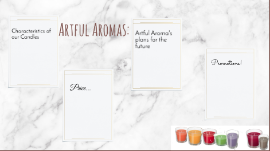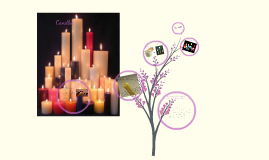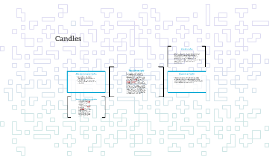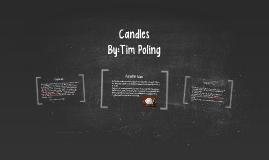Candles
Transcript: Manufacturing of Candles Candles The types of wax used in the making of candles have changed greatly during the past few decades. Today, substances are often mixed together to create stronger candles with higher melting points. In the United States, standard commercial candles usually contain 60 percent paraffin, 35 percent stearic acid, and 5 percent beeswax. Some candles contain small amounts of candelilla or carnauba waxes to regulate the softening or melting point of the finished wax. Beeswax candles are made of only pure insect wax and paraffin plus a small amount of stiffening wax. The wick is made of a high grade of cotton or linen. The material is braided so that it will burn in one direction and will curl so that its end remains in the candle flame's oxidizing zone for even and intense burning. Often, wire-core wicks are used. These wicks have a wire center that allows them to burn slightly hotter than cotton and remain erect in the melted wax In the developed world today, candles are used mainly for their aesthetic value and scent, particularly to set a soft, warm, or romantic ambiance, for emergency lighting during electrical power failures, and for religious or ritual purposes. Scented candles are used in aromatherapy. Disposal of Candles Use of Candles All candles are shipped from their respective producers. If there is anything wrong with the candle, people either throw it away or send it back to the company for a replacement. Process of Making Candles The Materials The manufacturing of candles consists of three steps: preparation of the wicking, preparation of the wax base, and continuous molding or extrusion of the finished candles. First, the wax is heated and melted into a clear, near-liquid state in huge metal kettles.Any desired scents and colours are added at this time. Since the invention of Joseph Morgan's first candlemaking machine, the making of candles has been performed mainly by continuous molding machines. Before the pouring of the wax, the wick is pulled through the tip of the mold. The wax is cooled to slightly above its melting point and poured into a molding table located above the molds where it then pours into the molds and is hardened. After candles are made, they are individually put into glass containers or wrapped in plastic. They are then bubble wrapped and put into to boxes to be shipped to the store to be put on sale.

















